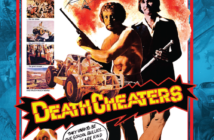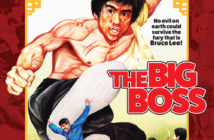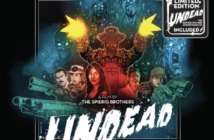
hey were a creative powerhouse of a band in the early 1990s and their unlikely sound remains unlikely to be repeated. The combination of slide bass guitar, baritone sax, drums and equally baritone vocals stood out on Triple J at the time and it helped that Grunge was all the rage, as were dubious trends like heroin chic.
Morphine was a band named after a drug, who occasionally sang about drugs at a time when drugs seemed mainstream. So it’s no surprise that the death of their singer Mark Sandman is often misattributed to narcotic misadventure.
This documentary explains Sandman’ death was a heart attack that cut down a band that was on the way up. It also reveals tragedy in the Sandman family, as Mark’ demise followed the death of his two brothers.
These events, coupled with the praise of musicians like Les Claypool, Ben Harper and Mike Watt, are what made the trailer for this documentary memorable to me and for a couple of years I’d looked for it. This is an interesting documentary, though at times it felt like they were stretching limited material to reach feature length. Like the use of shots of passages from books show how challenging it can be to tell a story visually.
Sandman was an innovator and his influence on the two-string bass includes bands like Presidents of the United States of America. This documentary only hints at that and there are sections in which Ben Harper and Mike Watt riff on inspiration that left me wanting more.
The shortage of live material is another drawback and the final moments of the film drift into sentimentality. Which is a shame as the band still have a lot to offer and the music has stood up well. Morphine’ creative constraints show a result greater than the sum of parts.
Sandman’ lyrics and delivery added a Beat Poet-esque flavour that contributed sophistication. It’s a shame he remains an enigmatic figure with friends struggling to make sense of the little they knew. South American travels are hinted at and the poignant matter or his parent’s disinterest in the successful career he created. Perhaps it’s better not to know and let Morphine’ music inspire without any baggage?
The accompanying CD opens with a moody, lo-fi spoken word piece and then the second track is an upbeat, New Wave number that sounds so unlike the Mark Sandman known in Morphine. Other songs show a variety of similarly dated styles and some hint at the sound with which he’d find success, like the third track with a driving baseline and horn wailing over the top.
The recordings show tight musicianship but rough recording, compared to the digital media of recent decades. In some ways the songs are like seeing old photos of friends taken in the 1980s, you kinda cringe at how their clothes have dated while transfixed by a familiar pair of eyes looking out.



